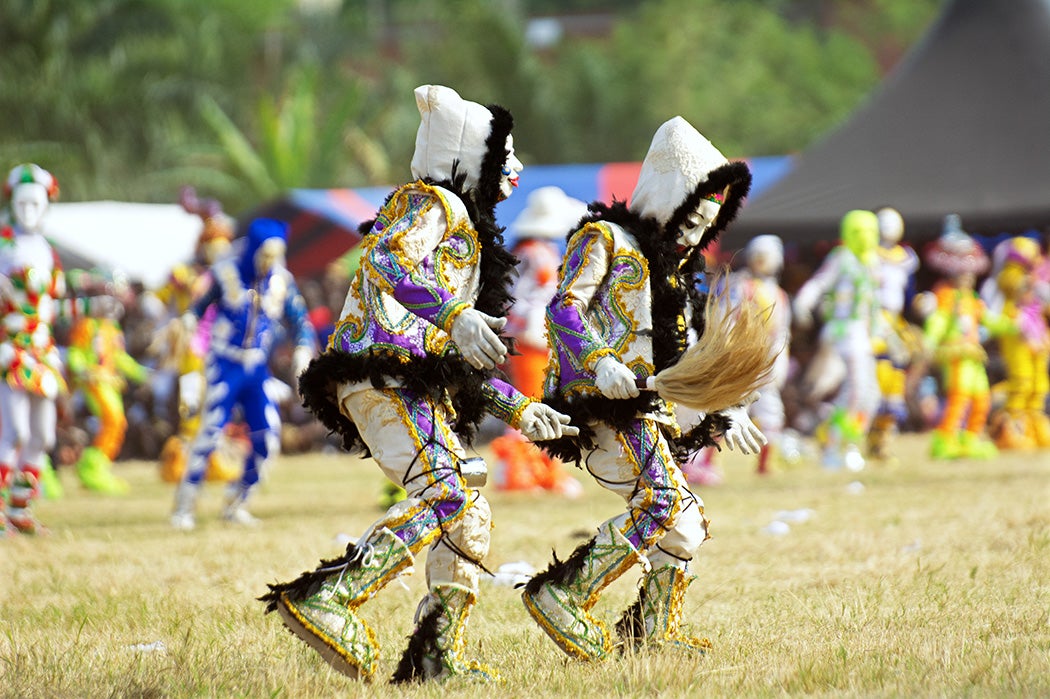In the middle decades of the twentieth century, you could find people in Ghana dressing up for important festivals in costumes roughly patterned on the regalia of the North American plains. What was the connection between these distant cultures?
Art historian Courtnay Micots writes that, since the seventeenth century, and possibly longer, Akan people of West Africa have participated in asafo, a local military force that is also responsible for festive rituals. During the Akwambo festival in central Ghana, for example, members of an asafo company parade to the local source of drinking water accompanied by drum beats, and a flag dancer ritually taunts the group’s rivals, often adorned with necklaces, anklets, and bells and amulets attached to a raffia skirt.
At least according to some participants, Fancy Dress festivals emerged in the nineteenth century as an alternative to asafo events, which were prone to become violent. They were probably inspired by both European costume balls and Caribbean carnival traditions imported by West Indian soldiers who the British had recruited to support their forces in Africa.
Among the costumes popular across the Atlantic world was the “Indian.” Starting in the nineteenth century, and particularly with the emergence of Hollywood westerns, the stereotyped image of a warrior from the North American plains spread around the world. On both sides of the Atlantic, Micots writes, Black communities used “Indian” costumes to convey anticolonial resistance and solidarity with other colonized people.
In Ghana, from the 1920s through ’70s, Christian mission schools played American movies including westerns. While most of these movies portrayed the cowboys defeating the Indians, two that made the greatest impression on audiences in Ghana were Custer’s Last Fight (1912) and Custer’s Last Stand (1936). Older Ghanaians told Micots they identified with the Native Americans’ fight against the white colonizers.
While twentieth-century Ghanaians knew they couldn’t successfully fight off their own British colonizers militarily, performances offered an opportunity for symbolic resistance. And the Indian warrior character was permissible in a way that portraying an African freedom fighter would not have been. In the 1930s, as frustrations with the British colonial government mounted and nationalist politics developed, Red Indian costumes became increasingly popular at Fancy Dress parties along Ghana’s coast. These bore limited resemblance to either the real regalia of Plains warriors or the movie versions, often featuring peacock feathers, bells, and masks.
Weekly Newsletter
Dressing up as characters had rarely been part of asafo festivals, but, starting in the 1950s, the groups adopted Red Indian costumes, with the color red apparently representing bravery and ferocity rather than a racial category. In fact, when Micots spoke with Ghanaians decades later, some weren’t sure if the character was intended to represent an “Indian” from North or South America, the West Indies, or even India.
The Red Indian character remained popular even after Ghana achieved independence in 1957, but since then it has largely faded away. By the time Micots was writing in 2012, more common Fancy Dress costumes inspired by North Americans included George Bush and Barack Obama.







